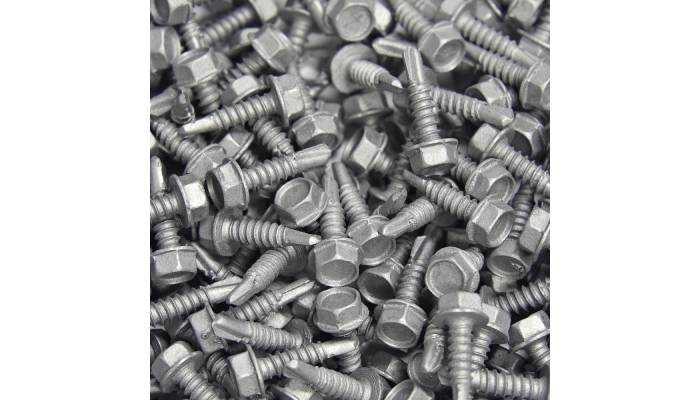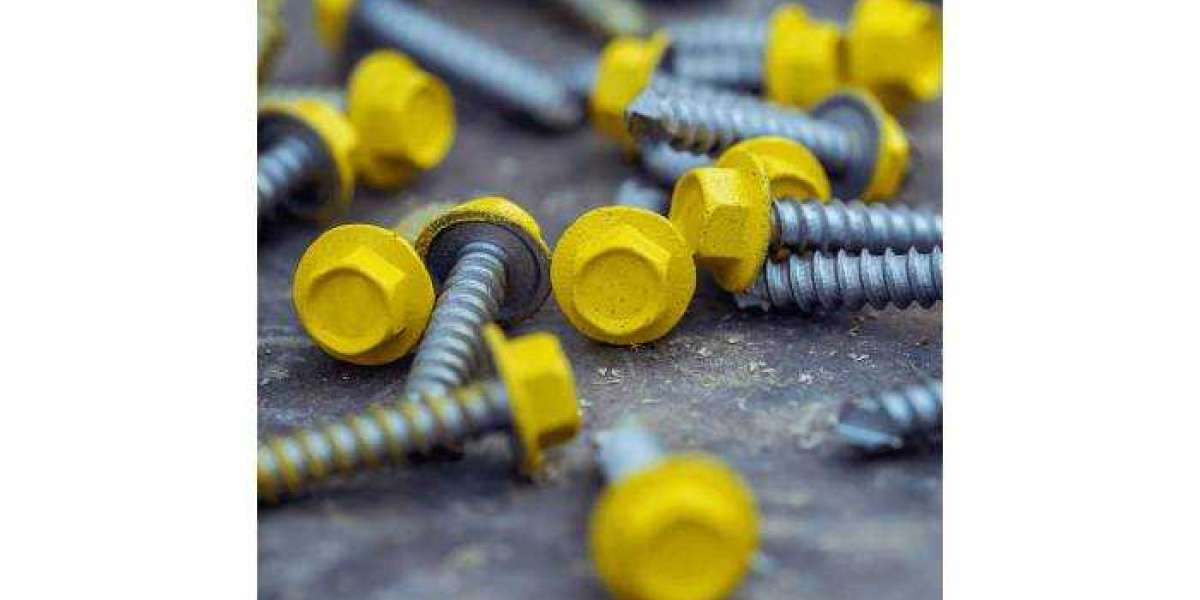The future of screw manufacturing technology looks promising, driven by several key trends. Advanced automation and robotics are set to enhance efficiency while adopting Industry 4.0 technologies like IoT and AI can enable real-time monitoring for better productivity. Innovations in materials, such as high-strength alloys and eco-friendly options, will boost durability and sustainability. There’s also a growing need for customization, pushing flexible manufacturing systems to adapt without raising costs significantly. As industries demand higher quality screws, strict quality control measures will be vital. However, challenges such as the skills gap and supply chain issues must be addressed to fully realize these advancements.
1. Technological Advancements in Screw Manufacturing
Screw manufacturing in India is witnessing a significant transformation driven by technological advancements. Automation and robotics are being integrated into production lines, enhancing both efficiency and precision. For instance, robotic arms can now assemble screws with remarkable accuracy, reducing human error and increasing output. Moreover, the adoption of Industry 4.0 technologies, such as the Internet of Things (IoT) and artificial intelligence (AI), allows manufacturers to monitor processes in real-time. This capability enables predictive maintenance, which helps avoid costly downtime and enhances overall productivity.
Another exciting development is the use of additive manufacturing, or 3D printing, in creating complex screw designs. This technology allows for rapid prototyping and the production of unique screw shapes that were previously difficult or impossible to achieve with traditional methods. For example, manufacturers can quickly test and iterate designs, leading to faster innovation cycles.
These advancements signify a shift towards smarter, more efficient operations in screw manufacturing, setting the stage for a future where precision and customization become the norm.

2. Innovations in Screw Materials
The future of screw manufacturing is being significantly shaped by innovations in materials. Manufacturers are increasingly turning to high-strength alloys and composite materials to enhance the durability and performance of screws. For instance, titanium alloys are gaining traction in aerospace applications due to their lightweight yet robust properties, which reduce overall weight without sacrificing strength. Additionally, the industry is exploring environmentally friendly materials and coatings that resist corrosion and wear while minimizing environmental impact. For example, bio-based coatings are being developed that not only protect screws but also decompose harmlessly at the end of their life cycle. This shift towards sustainable materials is crucial as industries strive to reduce their carbon footprint and promote greener practices. Furthermore, advancements in material science are enabling the creation of screws that can withstand extreme conditions, such as high temperatures and pressures, which is particularly beneficial in sectors like automotive and oil and gas. Overall, the evolution of screw materials is paving the way for more efficient, durable, and sustainable products.
Introduction of titanium alloys for enhanced strength
Use of composite materials for weight reduction
Development of corrosion-resistant coatings
Introduction of biodegradable materials for environmental sustainability
Advances in additive manufacturing techniques for complex shapes
Exploration of nanotechnology in material functionality
Implementation of high-performance polymers for specialized applications
3. Customization and Flexible Manufacturing
The demand for customized screws tailored to specific applications is reshaping the landscape of screw manufacturing. Manufacturers are investing in flexible manufacturing systems that can quickly adapt to produce a wide variety of screw designs without a significant increase in costs. For instance, advanced CNC machines and robotic systems can be reprogrammed to handle different screw types, allowing for shorter production runs with high precision. Additionally, digital technologies play a crucial role in this customization trend. With the help of software that integrates design and production, manufacturers can create tailored solutions that meet unique customer requirements while maintaining efficiency. This capability not only enhances customer satisfaction but also positions companies to respond rapidly to market changes and emerging trends.
4. Sustainability in Screw Production
Sustainability is becoming a cornerstone of screw manufacturing. Manufacturers are adopting energy-efficient production methods that significantly reduce carbon footprints. For example, using machines that consume less power during operations not only lowers energy costs but also aligns with global sustainability goals.
Recycling materials is another key practice, with many companies now implementing closed-loop systems. This approach allows waste from screw production to be reused, minimizing the need for new raw materials. Furthermore, the research into environmentally friendly materials and coatings is on the rise, focusing on reducing corrosion and enhancing the lifespan of screws without harming the environment.
Companies are increasingly looking for ways to source materials responsibly, ensuring that they are not only effective but also sustainable. For instance, some manufacturers are exploring bio-based materials that can decompose without leaving harmful residues. This shift reflects a broader trend towards responsible manufacturing practices that prioritize both performance and environmental impact.
5. Current Market Trends for Screws
The screw manufacturing industry is witnessing several key market trends that are shaping its future. One notable trend is the rising demand for high-performance screws across various sectors, such as automotive, aerospace, and construction. For instance, the automotive industry is increasingly adopting advanced fastening solutions to meet the stringent safety and performance standards of modern vehicles. This demand is pushing manufacturers to innovate and create screws that can withstand extreme conditions, such as high temperatures and corrosive environments.
Additionally, emerging economies are experiencing significant growth in the fastener market, driven by industrialization and infrastructure development. Countries in Asia-Pacific and Latin America are ramping up their construction and manufacturing activities, leading to an increased need for reliable and durable screws. This shift presents opportunities for manufacturers to expand their reach and cater to these growing markets.
Another trend is the emphasis on customization. As industries seek screws that meet specific application requirements, manufacturers are investing in flexible production systems that allow for rapid customization without incurring substantial costs. Digital technologies play a crucial role in this process, enabling manufacturers to adapt quickly to changing customer needs.
Furthermore, sustainability is becoming a central focus in the screw market. Companies are increasingly adopting eco-friendly materials and practices, responding to consumer demands for greener products. This shift not only enhances brand reputation but also aligns with global efforts to reduce environmental impact.
Overall, these market trends reflect a dynamic landscape where innovation, customization, and sustainability are at the forefront of screw manufacturing.
6. Quality Control and Standards in Manufacturing
Quality control in screw manufacturing is becoming increasingly rigorous as industries demand higher reliability and safety from their fasteners. Manufacturers are now adopting stricter quality control measures to ensure that each screw produced meets international standards, such as ISO and ASTM. This involves comprehensive testing protocols that evaluate factors like tensile strength, corrosion resistance, and dimensional accuracy.
Advanced testing methods, such as non-destructive testing (NDT) and automated inspection systems, are utilized to assess screw performance under various conditions. For instance, ultrasonic testing can detect internal flaws without damaging the screws, ensuring that only reliable products reach the market. Additionally, the integration of automation in quality control processes helps minimize human error and accelerates the inspection times, allowing manufacturers to maintain high production rates while upholding quality standards.
As customization becomes more prevalent, quality control must adapt to diverse specifications. Manufacturers are implementing flexible quality assurance systems that can accommodate unique designs without compromising the integrity of the final product. This adaptability is crucial in industries like aerospace, where precision and reliability are paramount. Overall, the focus on stringent quality control and adherence to established standards is essential for the future of screw manufacturing, ensuring that products can withstand the demands of various applications.
7. Digital Transformation in the Screw Industry
The screw industry is undergoing a significant digital transformation, driven by advancements in technology. Digital platforms are increasingly being used for supply chain management, which enhances transparency and fosters collaboration among manufacturers and suppliers. This shift allows for real-time data sharing, leading to quicker decision-making and improved efficiency. Additionally, the implementation of digital twins in manufacturing processes is revolutionizing screw production. By creating virtual models of the manufacturing environment, companies can simulate production scenarios, optimize processes, and identify potential issues before they arise. This proactive approach not only boosts productivity but also reduces downtime and waste. For instance, a manufacturer might use a digital twin to analyze the impact of a new material on screw performance, adjusting their processes accordingly before physical production begins. Such innovations are essential for meeting the growing demands of various sectors and ensuring the screw industry remains competitive in a fast-evolving market.
8. Challenges Facing Screw Manufacturers
Screw manufacturers today face several challenges that can impact their operations and growth. One significant issue is the skills gap in the workforce. As manufacturing technologies evolve rapidly, finding skilled workers who can operate advanced machinery and understand new processes is increasingly difficult. For instance, the integration of robotics and automation requires not only technical skills but also an understanding of programming and system management.
Another pressing challenge is managing supply chain disruptions. Events such as natural disasters, geopolitical tensions, or pandemics can lead to unpredictable fluctuations in raw material costs and availability. For example, the COVID-19 pandemic highlighted vulnerabilities in global supply chains, causing delays and increasing costs for many manufacturers.
Additionally, the push for sustainability adds another layer of complexity. Manufacturers must find ways to adopt eco-friendly practices while maintaining efficiency and profitability. This includes sourcing sustainable materials and implementing recycling programs, which can require significant upfront investment.
Lastly, as customer demands shift towards more customized solutions, manufacturers must adapt their processes to remain competitive. This might involve upgrading equipment or investing in new technologies that allow for greater flexibility in production. Balancing these challenges while striving for innovation and quality is crucial for screw manufacturers as they look toward the future.
9. Future Outlook for Screw Manufacturing Technology
The screw manufacturing industry is poised for transformative changes driven by technological advancements and evolving market demands. Automation and robotics are set to become integral, enhancing production efficiency and precision. Companies will increasingly adopt Industry 4.0 concepts, utilizing IoT and AI for real-time monitoring and predictive maintenance. This shift will not only streamline operations but also significantly boost productivity. Moreover, the rise of additive manufacturing, such as 3D printing, allows for rapid prototyping and the creation of complex screw designs, giving manufacturers a competitive edge.
Material innovations will play a crucial role in the future. High-strength alloys and composite materials are being developed to improve screw performance and durability. Additionally, the focus on sustainability will drive research into environmentally friendly materials and coatings that reduce corrosion and enhance the overall life cycle of screws.
Customization will also become a key focus as industries demand screws tailored to specific applications. Flexible manufacturing systems will enable manufacturers to respond quickly to these needs without incurring significant costs. Digital technologies will facilitate mass customization, allowing for a diverse range of products while maintaining efficiency.
Sustainability practices will be at the forefront, with a strong push towards energy-efficient production methods and recycling initiatives. Closed-loop manufacturing systems will minimize waste and optimize resource use, aligning the industry with global sustainability goals.
Market trends indicate rising demand in sectors like automotive, aerospace, and construction for high-performance screws. Emerging economies are experiencing growth in the fastener market due to industrialization and infrastructure development.
To ensure product reliability, stricter quality control measures and adherence to international standards will be essential. Advanced testing methods will assess screw performance under various conditions, further enhancing safety.
Digital transformation will continue to reshape the industry, with digital platforms improving supply chain management and collaboration among stakeholders. The use of digital twins in manufacturing will allow for simulations that optimize production processes.
However, the industry faces challenges, such as addressing the skills gap due to rapid technological changes and managing supply chain disruptions. The future of screw manufacturing will be marked by continuous evolution, driven by ongoing research and development in materials and processes, ultimately meeting the growing demands for efficiency, customization, and sustainability.
Frequently Asked Questions
1. What new technologies are being used in screw manufacturing?
New technologies in screw manufacturing include 3D printing, automation, and advanced robotics. These innovations help create screws more quickly and accurately.
2. How does automation improve the screw production process?
Automation improves screw production by speeding up the manufacturing process, reducing human error, and allowing for high-volume production without sacrificing quality.
3. What role does sustainability play in screw manufacturing technology?
Sustainability in screw manufacturing involves using eco-friendly materials and processes to reduce waste and energy consumption, helping the environment while still producing high-quality screws.
4. How are materials for screws evolving in the industry?
Materials for screws are evolving with the use of lighter and stronger alloys, as well as biocompatible materials for medical applications, improving performance and durability.
5. What impact does digitalization have on screw manufacturing?
Digitalization enhances screw manufacturing by enabling real-time monitoring and data analysis, which leads to better efficiency, quicker problem-solving, and improved production planning.
TL;DR The future of screw manufacturing technology is shaped by technological advancements like automation and Industry 4.0, innovative materials aimed at enhanced durability, and a push for customization and sustainability. Market trends show increased demand in sectors like automotive and aerospace, necessitating strict quality controls and adherence to standards. Digital transformation is enhancing supply chain management, while challenges include workforce skills gaps and supply chain disruptions. Continuous evolution in manufacturing processes and materials research is expected to meet rising market demands.








